2014 Meetings
The linked titles of some meetings are the presentations speakers provided.
December 09, 2014: " Updates on CISPR 32 and CISPR 35 and Size of Devices to Be Measured at 3m " Andy Griffin, Cisco Systems
Abstract: The first part of the presentation provides a quick review of the status of the EMC standards for Multimedia Equipment (MME). CISPR 32 emission standard which replaces CISPR 22 & 13 and the draft immunity standard CISPR 35 (which will replace CISPR 24 & 20). The second part addresses the issues of the size of equipment that should be measured at 3m, for radiated electric field emissions, in the frequency range 30MHz to 1GHz. Different standards take a different approach and therefore it would beneficial if a common approach was adopted based upon measurements as well as from a pragmatic perspective, i.e. not just 'because we know'...
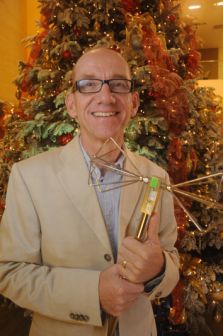
Bio: Andy Griffin is Compliance Technical Lead at Cisco Systems in San Jose, CA. Went to College in Nottingham UK and has over 25 years of experience within the EMC industry. His focus has been on developing, improving and tracking the global standards important to Cisco products and services.
He is currently Chair of CISPR H WG1, Vice-chair of CISPR I WG4, and an active member of CISPR I WG2, CENELEC TC209, CENELEC TC210, ETSI ERM EMC, ANSI C63.4, US TAGS for CISPR A, B, H, I, and SABS EMC. In summary, he is an avid experimentalist!
November 11, 2014: " Radiated Emissions/Immunity of the NASA/Orion Mars/Moon Capsule " John Norgard. NASA/JSC
Abstract: For the future NASA Manned Space Exploration of the Moon and Mars, a blunt body capsule, composed of a crew exploration module and a service module, with a parachute decent for reentry back to Earth, will replace the retired Space Shuttle. A Capsule Parachute Assembly System (CPAS) is being developed for preliminary parachute drop tests at the Yuma Proving Ground (YPG) to provide measurements of position, velocity, acceleration, attitude, temperature, pressure, humidity, and parachute loads. The avionics system on CPAS also provides firing events to deploy and release staged/reefed parachutes using mortars and pressure cartridge assemblies. Intentional and unintentional radiation emitted and received by antennas and electronic components on/in the capsule are being tested for radiated emissions/immunity.
In this presentation, pictures of the test setups, capsule build-up and development, parachute drop tests, and test results for the components and assembled system are shown.

Bio: Prof Norgard was the Dean of the EAS College, Chair of the MAE Department, and Chair of the ECE Department at the University of Colorado. Before coming to the University, he was a Professor in the ECE Department at Georgia Tech and was a Post-Doctoral Fellow at the Norwegian Defense Research Establishment in Oslo, Norway. He has also served as an Adjunct Professor at Syracuse University and at the University of Houston.
He worked at NASA/JPL while studying at Caltech, and was a Co-Op student at Georgia Tech while working at the Charleston Naval Shipyard and Polaris Submarine Base.
Dr Norgard is a Fellow of IEEE, on the Board of Directors of the EMC Society, on the Board of Directors for ACES, past member of the Board of Physics and Astronomy for NAS and NRC, Past Chairman for Commission A/Metrology of URSI, and an Associate Editor of the EMC Transactions in the area of antenna metrology..
Dr Norgard has authored several hundred journal articles and conference papers and is the author of several chapters in four electromagnetic books.
October 14, 2014: " Metamaterial-Based Gigahertz Common-Mode Filters for 10-Gbit/s and 25-Gbit/s Differential Signaling " Miroslav Pajovic
Abstract: In addition to the desired differential signals, the undesired and EMI/SI harmful common-mode noise can propagate along differential signal lines at PCBs and IC Packages. To suppress critical common-mode at gigahertz frequencies without degrading quality of the differential signals, the gigahertz common-mode filter structures with Metamaterial properties are proposed herein. These designs are directed to compact-size electromagnetic band gap (EBG) structures suitable for placement in multilayer PCBs, individual IC chip packages, or in optical transceiver modules. The filters provide common-mode suppression at 10-Gbit/s and 25-Gbit/s differential signal lines at the EMI-critical frequencies, 10.3 GHz, 20.6 GHz, and 25 GHz, where common-mode noise can be highly problematic.
What We Will Talk About?
- Objectives (EMI and SI issues associated with Common-Mode noise at PCB differential signal lines)
- The relationship between Common-Mode Currents and EMI Emissions
- Fundamentals of Metamaterial Structures
- Metamaterial-Based (or EBG) CM Filters for 10-Gbit/s- and 25-Gbit/s-Based Differential Signaling
- The example of other Metamaterial application - Metamaterial-based antenna
Bio: Miroslav is currently an EMC Design and RF/Antenna consulting engineer. Previously, he was an EMC technical lead, designer and researcher in Cisco Systems, San Jose, CA; Senior EMI/RF engineer in Nortel Networks, Santa Clara, CA; and Principle RF System Engineer in several HF/RF Centers in Washington DC, USA and Yugoslavia. He holds Diploma Degree in Electrical and RF Engineering (equivalent to M.S. degree) from Belgrade University, Serbia, Yugoslavia. He is an author of several IEEE EMC Transactions papers published in 2007, 2008, 2010, and IEEE EMC International Symposium paper, 2013. Also, he filed USA patents in 2011 and 2012. Currently, he is focusing on R&D of Metamaterial antennas and related microwave circuits for EMC and RF/Microwave applications.
September 09, 2014: " Using Partial Discharge Waveforms to Diagnose Energized Medium Voltage (12kV – 34.5kV) Cables and Switchgear " Ashley Harkness , Electrical Reliability Services
Abstract: The session attendees become acquainted with detection techniques and analysis of Partial Discharge (PD) waveforms. Early detection of PD can allow maintenance personnel focus and prioritize maintenance efforts to minimize unplanned electrical power outages.
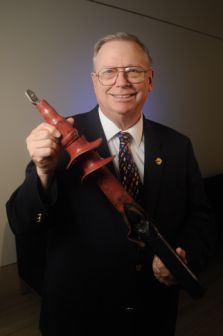
Bio: Ashley Harkness joined Electrical Reliability Services (then known as Electro-Test, Inc.) in 1982. His duties have included a wide spectrum of specialized electrical measurement and testing projects including European Community Machinery and EMC Electromagnetic Compatibility Directive testing, basic insulation level (BIL) impulse testing, process & control instrumentation acceptance and testing, electrical equipment forensic investigations, and electrical product safety testing. In addition, Ashley is a technical resource with company-wide training and responsibilities. Since 2005, Mr. Harkness has been the technical manager for the ERS Medium Voltage Systems (Switchgear and Cables) On/Off Line Partial Discharge/cable testing Initiative. In this capacity, he has taken a lead in direct application of test equipment and processes, training of technical staff, and customer sales presentations.
May 13, 2014: " Extraction of dielectric properties of PCB laminate dielectrics on PCB striplines taking into account conductor surface roughness " Marina Koledintseva, Oracle
Abstract: High-speed digital design and signal integrity (SI) engineers need accurate characterization of commercially available printed circuit board (PCB) materials, since this is important for providing technical characteristics of designs and reducing cost-to-quality ratio. PCBs are known to have a substantial level of copper foil roughness. If the roughness effects upon signal propagation are neglected or underestimated, especially at GHz operating frequencies, the dielectric properties extracted with transmission line methods might be misleading and result in significant errors in designs from SI point of view. An experiment-based method to extract frequency- dependent dielectric properties of PCB laminates and separate rough conductor loss from dielectric loss on PCBs with substantial levels of copper foil roughness has been recently proposed. It is a traveling-wave technique to separate conductor loss from dielectric loss on printed circuit board (PCB) striplines, called the differential extrapolation roughness measurement (DERM). This method is based on the analysis of frequency (ω) components in losses behaving as √ω , ω, and ω². The further development of this procedure is discussed in this talk. The new procedure is applied to both loss constant and phase constant, as opposed to the previous procedure, which is applied to only loss constant. A roughness parameter QR to quantify conductor surface roughness has been proposed, and it allows for more accurate extraction of dielectric constant and loss tangent over a wide frequency range. In this work, a number of sets of test vehicles with different copper surface roughness profiles, but the same dielectric, are studied, and unambiguous dielectric parameters of the laminate substrates are extracted. The correlation between additional slope in insertion loss due to roughness and the QR factor has been established, and it leads to the development of the “design curves”, which could be used by SI engineers in their designs.
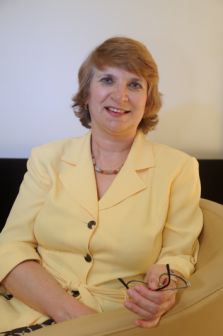
Bio: Marina received her M.S. and Ph.D. degrees from National Research University “Moscow Power Engineering Institute”, Russia. In 2000-2014 she worked a Research Professor with the Electrical and Computer Engineering Department, the Electromagnetic Compatibility Lab, and Materials Research Center of Missouri University of Science and Technology. Since April 2014 she joined the EMC Design group at Oracle as a Senior Hardware Engineer. Her primary research interests are electromagnetics of complex media, including composite materials, computational electromagnetics, and microwave engineering. Dr. Koledintseva in 2010-2013 served as a Chair of TC-11 (Nanotechnology and Advanced Materials) in IEEE EMC Society. She is an author and co-author of 220 peer-reviewed publications, including three book chapters.
April 08, 2014: " Advancements in Over-The-Air Testing of Multi-Format Wireless Devices " Derek Skousen, Bluetest
Abstract: As mobile devices increase in functionality, their complexity, interactive compatibility and performance requirements continue to grow. Over-The-Air (OTA) testing has become a critical tool in the development of devices under a mountain of expectations. Focused conducted test systems and whole-network drive test solutions are not enough to rapidly differentiate design improvements at the device level. OTA systems promise to fill the gap by providing repeatable, lab centered solutions that stress whole devices with real-world operational variables. This presentation provides an introductory overview of OTA solutions and describes some of the latest techniques and technologies applied to this area of test and measurement. Multipath test systems using anechoic and reverberation chambers are discussed as they apply to tests such as Total Radiated Power, Total Isotropic Sensitivity or Impaired Channel Throughput.
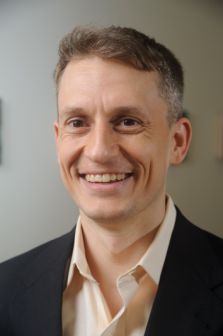
Bio: Derek Skousen is Technical Marketing Manager for Bluetest, a innovative wireless test company from Gotherburg Sweden. He has been marketing and engineering high-frequency test solutions for almost 15 years and has worked for Hewlett Packard, Agilent Technologies, MI Technologies and TeleCommunications Systems Inc. Derek has a BSEE from BYU (1997) and an MBA from Emory-Goizueta (2010). He currently lives near Atlanta, GA.
March 11, 2014: "Really, Truly Understanding Shielding " Orin Laney
Abstract: RF systems use shields and ground planes for EMI containment, constant impedance lines, signal separation, and for signal integrity management. However, there is more subtlety to them than is commonly supposed. In one experiment, the shielding effectiveness of a commercial coaxial cable was increased by 20 dB by removing braid wires. The talk will discuss this result, review the disparate shielding methods implicit in Maxwell’s equations, and cover why we find magnetic transformers but not “capaformers” in parts catalogs, and more. Finally, a review of selected commercial products will illustrate how shielding principles affect design choices.
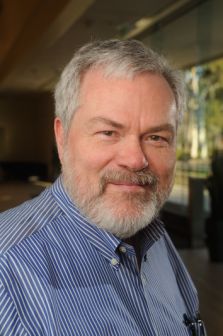
Bio: Orin Laney lives in Mountain View and is an independent consultant in the areas of picosecond electronics, RF Instrumentation, mixed-signal electronics, magnetics design, and design for SI and EMC compliance. He also has extensive experience running and advising small businesses and startups. Mr. Laney holds an MSEE and an MBA, and is a registered PE and iNARTE certified EMC engineer.
February 11, 2014: "The The Effects of Compositional Changes and the Selection of Ferrite Materials for EMI Suppression and Signal Integrity Applications " Blake Roberts, Markten Technologies
Abstract: Ferrite materials are used in many applications for EMC and EMI suppression on PCB applications, cable harnesses and as coatings. Ferrite materials for EMI suppression range from low frequency (10MHz), broadband, and high frequency (2GHz). When a ferrite is needed for compliance or signal integrity, the most common selection is a process of elimination from an engineering sample kit. This process is one that is most commonly very costly and inefficient. The presentation provides a practical selection guide to properly identifying the materials that yield the highest performance and the most economical solution. By using this approach, it will assure that the most economical solution is designed in and assures that the materials and supplier part number is supported. The presentation will also cover the compositional changes that have affected ferrite materials over the last 15 years and what that means to the industry and the effects of DC bias on ferrites when used as differential mode chokes. In addition, the use of submicron ferrite materials will be discussed in applications for coatings and dispersions.

Bio: Blake provides leadership for all Markten Technologies activities including Sales Management, Quality, Operations, and Logistics. His 16 years of experience in the ferrite industry includes roles as global product manager, corporate planner, and process engineer. Blake's passion and ability to take a product from design to production is truly one of a kind. He understands that ferrite solutions begin with listening to the customer’s needs and application demands and then using this information to select the best solution. Blake has worked with some of the top electronics companies in the world: Microsoft, HP, Lexmark, Dell, Apple, Motorola, Foxconn, Medtronic, GE, Sanmina, Molex, Canon, Cisco, Rockwell, and many others.
January 14, 2014: "The Impact of Cables and Connectors on Radio Frequency and Microwave Measurement Uncertainties " Dennis Lewis, Boeing
Abstract: Microwave test and measurement equipment is used for many applications, including component measurements, electromagnetic compatibility testing, metrology and wireless environment assessments. Much of this equipment requires special care and consideration in order to eliminate damage and maintain a high level of accuracy. When developing these high frequency measurement systems and evaluating system performance, it is common to consider the warranted equipment specifications. Very often, however, the error contribution of cables and connectors to the system uncertainty is overlooked. Impedance mismatch is typically the largest source of measurement error and is largely influenced by the cables and connectors used within the system. Something as insignificant as a $30 connector can adversely affect the performance of a system costing several hundred thousand dollars. This presentation provides an overview of commonly used cables and connectors and discusses some of the errors associated with them. The impact of these errors on overall measurement system uncertainties is discussed. The presentation finishes with some practical examples and real world applications to help guide participants in the selection and use of cables and connectors and more accurately assess system performance.
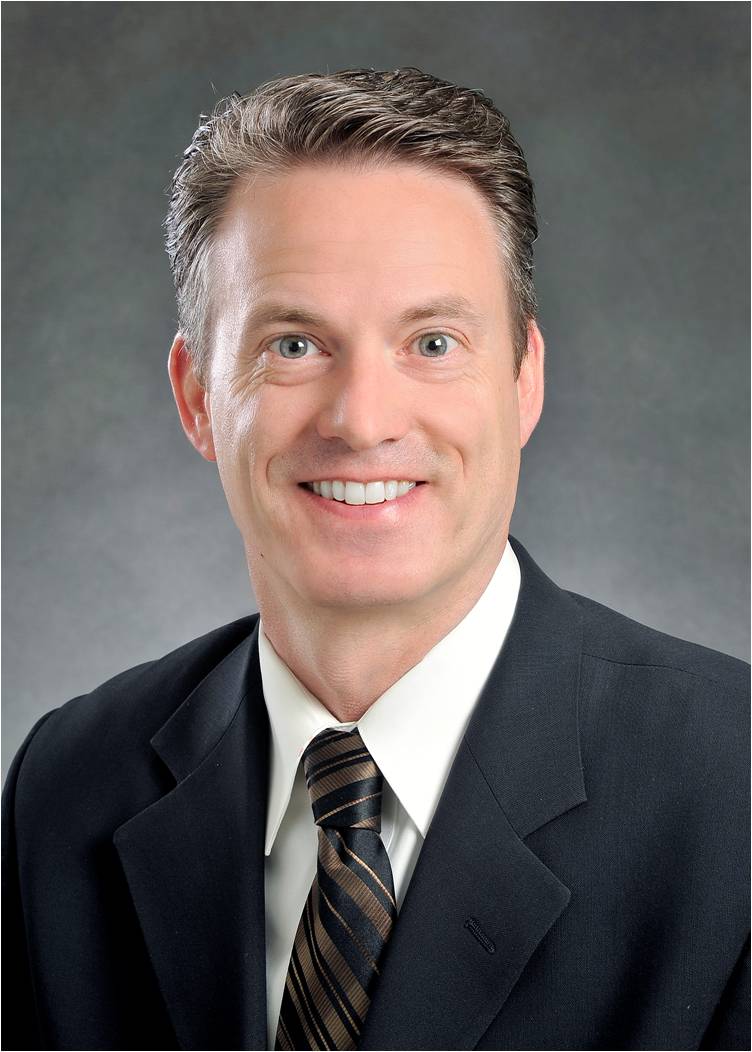
Bio: Dennis Lewis received his BS EE degree with honors from Henry Cogswell College and his MS degree in Physics from the University of Washington. He has worked at Boeing for 25 years and is recognized as a Technical Fellow. He currently has leadership and technical responsibility for the primary RF, Microwave and Antenna Metrology labs. Dennis holds six patents and is the recipient of the 2013 Boeing Special Invention Award. He is a member of the IEEE and several of its technical societies including the Microwave Theory and Techniques Society (MTT-S), the Antennas and Propagation Society and the Electromagnetic Compatibility (EMC) Society. He actively contributes to these societies as a member of the IEEE MTT-S subcommittee 11 on microwave measurements and as a Distinguished Lecturer for the EMC Society. He is a Senior Member of the Antenna Measurements Techniques Association (AMTA) and chaired its annual symposium in 2012. Dennis is an active member and past chairman of the Technical Advisory Committee for North Seattle Community College where he mentors engineering students. His current technical interests include aerospace applications of reverberation chamber test techniques as well as microwave measurement systems and uncertainties